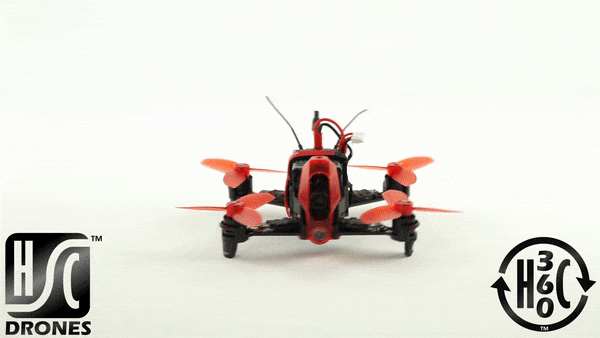
The Walkera Rodeo 110 is a small brushless micro drone that is well built and easy to set up. This little machine is an excellent option for anyone looking to get into FPV flying. If you want to race drones you don’t want to start with a big bad machine like you see the pilots flying on the DRL (Drone Racing League). You want to start with something small like the Rodeo.
First Impression of the Walkera Rodeo 110
My first impression of the Rodeo is that it is well built. The carbon fiber frame is solid and the camera guard and battery placement give me the impression that someone took their time when designing this quadcopter. You don’t have batteries being held on by rubber bands or cameras that look like they were added as an afterthought. These nice looks come at a cost: weight. This is a little heavier than some of the other micros we’ve flown. That doesn’t mean it’s a dog though. We measured its thrust-to-weight ratio and found that this drone generates 2.9 times is own weight in thrust. That’s better than many other fan-favorite drones in this the micro brushless category.
Small in Size, but not Power
The added weight doesn’t mean it flies like a pig. We measured its thrust-to-weight ratio and found that this drone generates 2.9 times is own weight in thrust. That’s better than many other fan-favorite drones in this the micro brushless category. The Walkera Rodeo comes in just under the King Kong 90GT’s thrust-to-weight ratio of 3.0, but it beats the Baby Hawk’s ratio of 2.5.
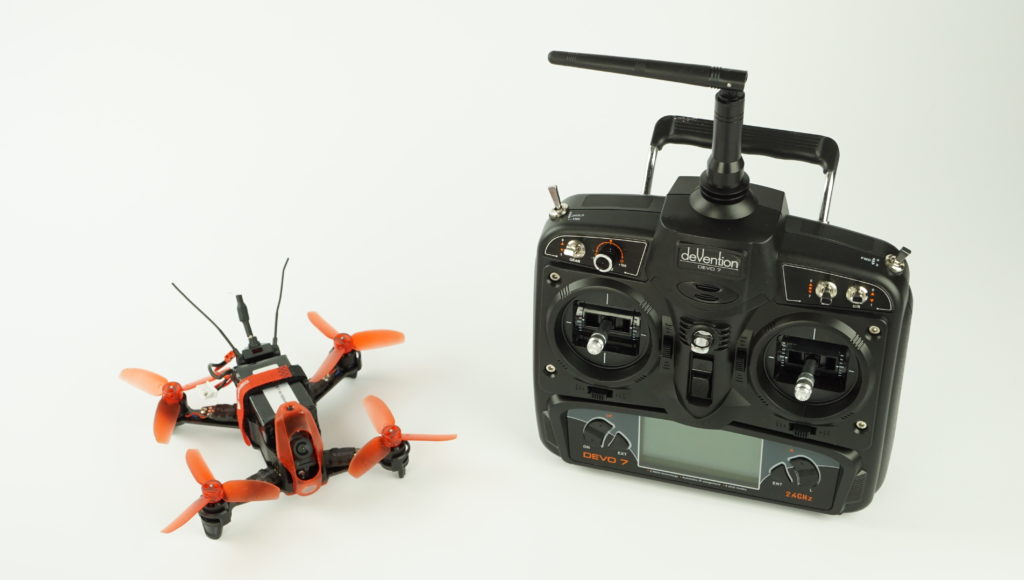
Easy To Fly
One of the big issues with getting into flying FPV is that a lot of these drones just are not user-friendly. We have a good article that can help get you acclimated to some of the terminology, but for the most part, the Walkera Rodeo 110 was plug-and-play. This really is only true if you pick up the RTF or Ready-To-Fly version that includes the Devo7 remote.
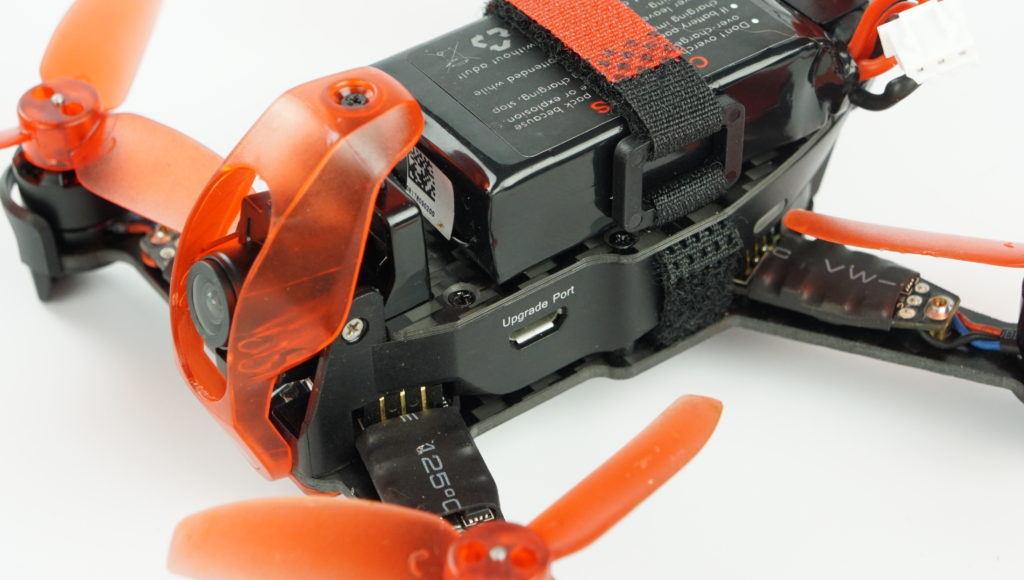
I charged the battery and was able to fly the Rodeo right away. I didn’t have to go through a binding process. I didn’t have to add a receiver. I didn’t have to alter any settings in Betaflight or Cleanflight. It was really refreshing to not have to hours prepping the drone. Eventually, I will do some tuning in Betaflight, but that will come later. It flies pretty well right out of the box.
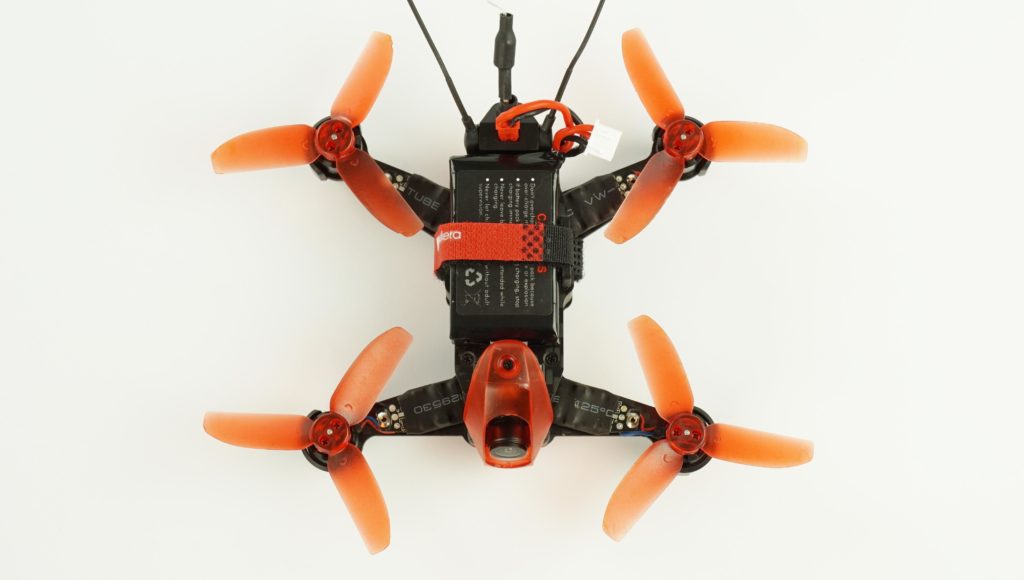
Getting the Rodeo armed was a little different. I expected one of the switches to arm the quad, but it was simply armed by moving the throttle all the way to the bottom and to the left. When I crashed it disarmed itself or I could disarm it manually by pushing the throttle down and to the right.
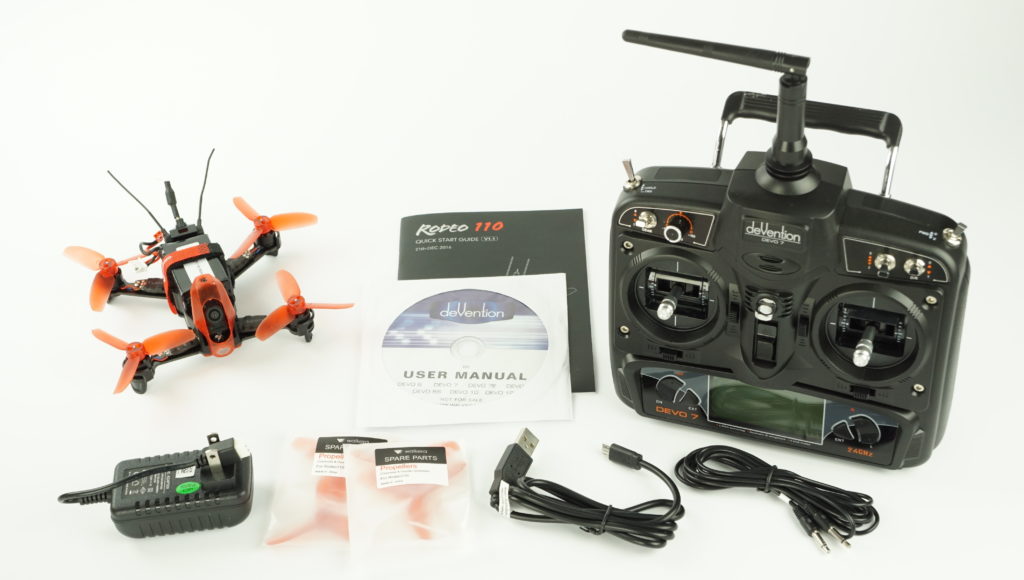
The Rodeo 110 Was Built to Last
This little flyer is quite durable. I may have crashed it a few times on my first flights and it turned out none the worse for wear. The frame is durable and the propellers are flexible. It is nice to not have to replace propellers after every crash. Walkera says this is a good indoor flyer. It might be if you have a really big house and don’t have anything breakable. It is a little too big and powerful for me to comfortably fly inside. Plus there are not any propeller guards, so if it hits a wall it is going to do some damage.

Rodeo 110 Camera
The FPV camera angle is adjustable, which is nice one you get acclimated to flying FPV. The camera is a 600TVL and is switchable from 25mw to 200mw. You do so by holding down the exposed button under the battery for 30 seconds. An LED will light up letting you know you are in high-power mode. We do recommend you fly using the higher powered 200mw, you will get a little more range on your FPV connection.
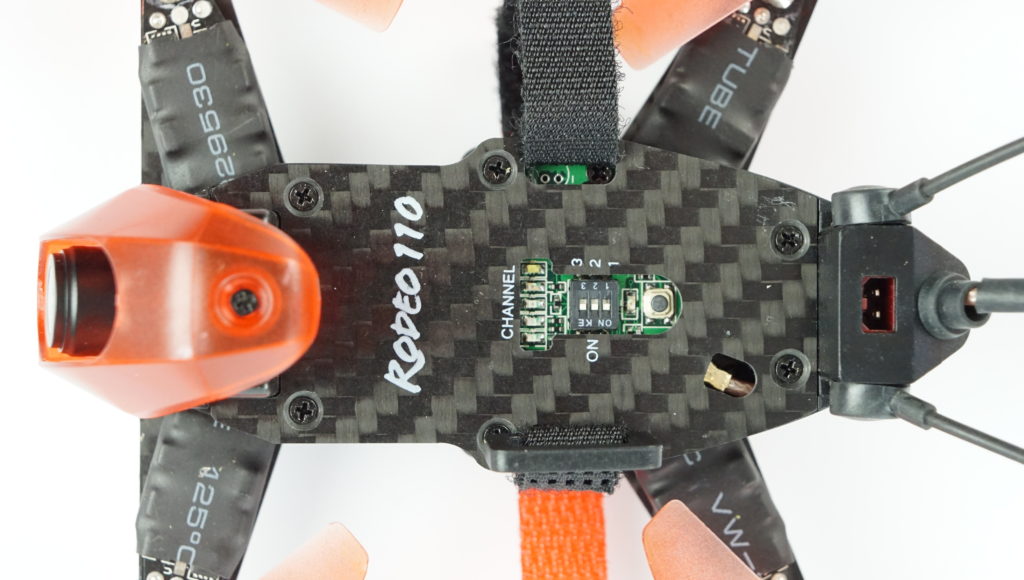
The camera on the Rodeo could be better. The 600TVL is a pretty basic camera and doesn’t do well transitioning from light to dark. It is perfectly fine in most situations and looks good in well-lit areas. There isn’t a place on the drone to record video, so you’ll have to rely on your goggles to do so. I did a lot of flying the Rodeo with my inexpensive Force1 007 goggles. If you want help picking the right pair of FPV goggles then check this out.
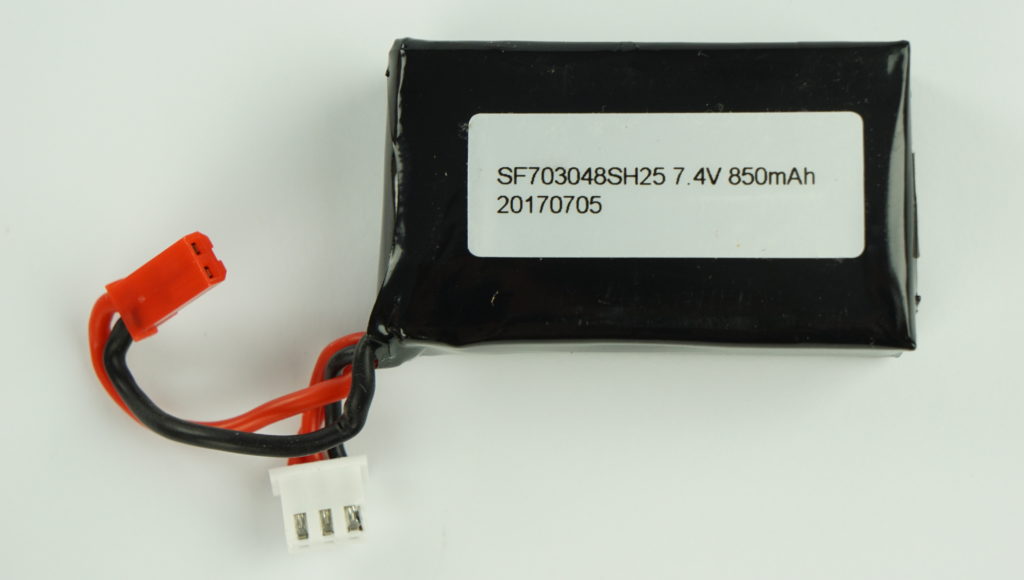
Should You Get a Rodeo 110?
Overall, we really like the Walkera Rodeo 110. It is a smooth first flyer for anyone wanting to get into flying FPV. No, it isn’t a bonafide race drone, but it is a great step towards learning how to fly one. We would definitely recommend this quad for anyone that wants to get into FPV flying.
| Order a Walkera Rodeo 110 |
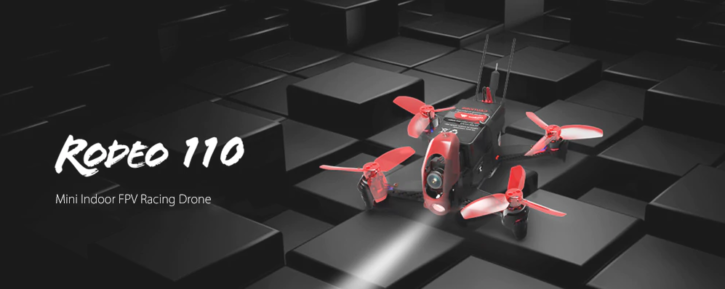
More Drones…

Every month we update what we believe are the best drones on the market. Check out Best Drones Now. We have also created the one-of-a-kind Half Chrome Drone Cipher™. You answer a few questions and we’ll pair you with the best drone for you.
| Best Drones Now |

Do you want to search by price? Click on your menu above or we can break it down for you. Check out drones under $50, from $50-100, from $100-200, from $200-500 or over $500. Maybe you like a good Top Ten list, we’ve got you covered.
| Drones by Price |
Learn More…
If you want to learn more about taking great pictures or flying FPV then check out our comprehensive guides on those topics. Also take a look at our articles on how to choose the right drone for great aerial photos or for getting started flying race drones. Learn more about drones and how to get the most out of them in our Drone Academy. In the Academy we also detail some of the advanced testing we do, including our recent addition, drone thrust testing.
| Drone Academy |
I Want Videos…
Did you know that Half Chrome has its own YouTube Channel? We have reviews, flight tests, crashes, 360-degree videos and more. Check it out and subscribe today.
| Half Chrome YouTube Channel |
Disclosure:
This website contains affiliate links, which means we receive a commission if you make a purchase using these links. For full details visit the disclosures and disclaimers page.
- Beginner
- Discounts
- Wedding
- Youth


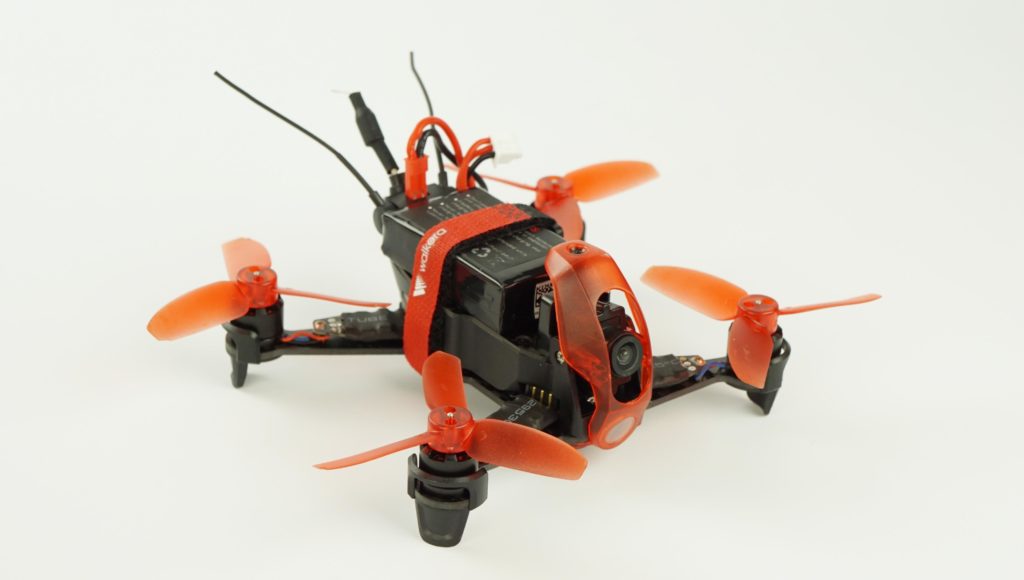
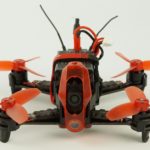
 Easy Setup
Easy Setup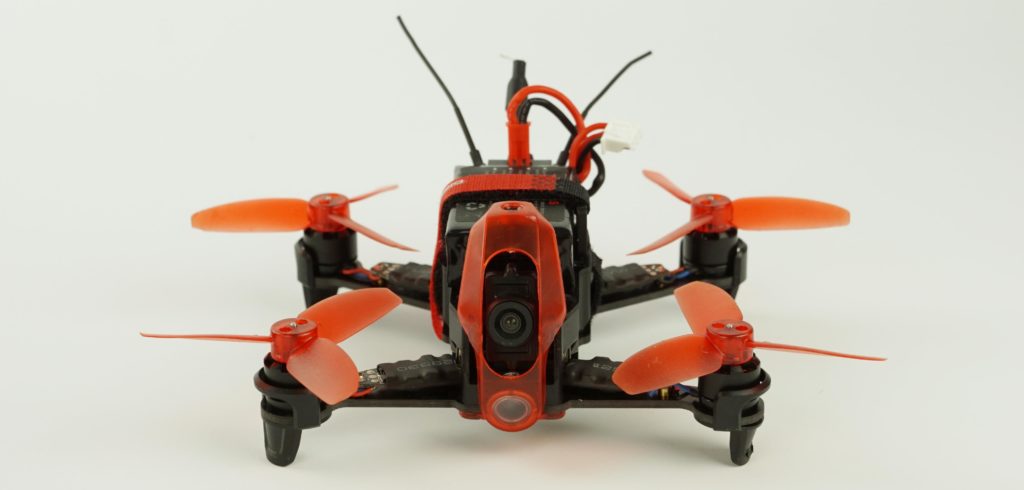















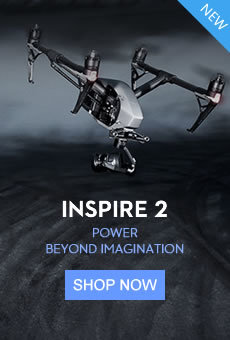
Pingback: Best Drones for Christmas 2017 - Half Chrome Drones